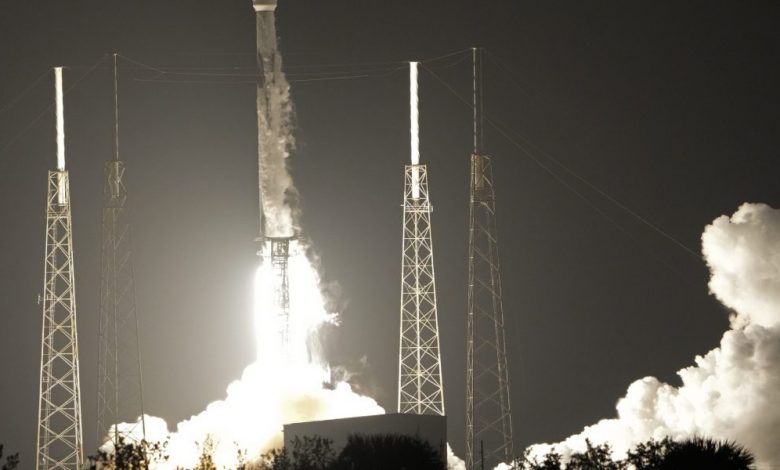Launch of SpaceX begins slow journey to the moon for the lander of the Tokyo company ispace

A Tokyo company headed to the moon with its own private lander on Sunday, launching on a SpaceX rocket carrying the United Arab Emirates’ first lunar rover and a toy-like robot from Japan designed to roll around in the gray dust up there.
It will be almost five months before the lander and its experiments reach the moon.
The company ispace has designed its ships to save money with minimal fuel consumption and leave more space for cargo. So it takes a slow, low-energy path to the moon and flies 1 million miles (1.6 million kilometers) from Earth before returning and intersecting with the moon in late April.
In contrast, NASA’s Orion crew capsule carrying test dummies took five days to reach the moon last month. The lunar flyby mission ends on Sunday with a splashdown in the Pacific.
The ispace lander will target Atlas Crater on the northeastern part of the lunar face, which is more than 87 kilometers wide and just over 2 kilometers deep. With its four legs extended, the lander is more than 2.3 meters tall.
Since a science satellite is already orbiting Mars, the UAE also want to explore the moon. His rover, named Rashid after Dubai’s royal family, weighs just 10 kilograms and, like everything else on the mission, will operate on the surface for about 10 days.
In addition, the lander carries an orange sphere from the Japanese Space Agency, which will transform into a wheeled robot on the moon. Also flying: a solid-state battery from a Japan-based spark plug manufacturer; an Ottawa, Ontario company flight computer using artificial intelligence to identify geological features seen by the UAE rover; and 360-degree cameras from a Toronto-area company.
A small NASA laser experiment hitchhiked aboard the rocket and is now traveling alone to the moon to look for ice in the permanently shadowed craters of the lunar south pole.
The ispace mission is called Hakuto, which is Japanese for white rabbit. In Asian folklore, a white rabbit is said to live on the moon. A second moon landing by the private company is planned for 2024 and a third for 2025.
Founded in 2010, ispace was among the finalists in the Google Lunar XPRIZE competition, which requires a successful landing on the moon by 2018. The ispace-built lunar rover was never launched.
Another finalist, an Israeli nonprofit called SpaceIL, managed to reach the moon in 2019. But instead of landing softly, the Beresheet spacecraft crashed into the moon and was destroyed.
With a morning liftoff from Cape Canaveral Space Force Station on Sunday, ispace is now on track to become one of the first private companies to attempt a moon landing. Though they won’t launch until early next year, lunar landers built by Pittsburgh’s Astrobotic Technology and Houston’s Intuitive Machines could beat ispace to the moon thanks to shorter travel times.
Only Russia, the US and China have achieved so-called “soft landings” on the moon, beginning with the former Soviet Union’s Luna 9 in 1966. And only the US has put astronauts on the lunar surface: 12 men in six landings.
Sunday marked the 50th anniversary of the last astronaut lunar landing by Eugene Cernan and Harrison Schmitt of Apollo 17 on December 11, 1972.
NASA’s Apollo lunar images were “about the excitement of technology,” said Takeshi Hakamada, ispace’s founder and CEO, who wasn’t alive at the time. Well, “it’s the excitement of the business.”
“This is the beginning of the lunar economy,” Hakamada noted on SpaceX’s launch webcast. “Let’s fly to the moon.”
The launch should have happened two weeks ago but was delayed by SpaceX due to additional rocket controls.
Eight minutes after launch, the recycled first stage booster landed back at Cape Canaveral under a nearly full moon, with the twin sonic booms echoing through the night.
Our new weekly Impact Report newsletter explores how ESG news and trends are shaping the roles and responsibilities of today’s leaders. Subscribe here.



